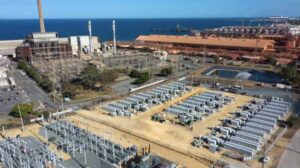Federal government data has revealed big increases in the amount of toxic air pollutants emitted by Australia’s ageing fleet of coal-fired power plants, even while the output of some of those generators has decreased.
Analysis of new data from the National Pollutant Inventory found that coal plants in Victoria, New South Wales and Queensland reported significant increases in emissions of the most toxic pollutants in the year 2020-21, including mercury, nitrogen oxides (NOX) and particulate matter.
As a new analysis from Environmental Justice Australia points out, quite apart from the climate impact coal generation has through CO2 emissions, their emission of substances like mercury has significant, accumulative and irreversible effects on the environment and human health.
Fine and coarse particulate matter, or tiny particles of burnt, are drawn down deep into the lungs and can cause asthma, stroke and heart attacks, while emissions of sulfur dioxide (SO2) can induce headaches and anxiety while also potentially damaging the respiratory tract.
Low levels of NOX exposure can irritate eyes, nose, throat and lungs and can lead to coughing, shortness of breath, tiredness and nausea. While exposure to high levels of any types of mercury can permanently damage the brain, kidneys, and developing foetus – it is especially harmful to children.
According to the federal government data, Victorian coal plants – EnergyAustralia’s Yallourn, AGL Energy’s Loy Yang A and Alinta Energy’s Loy Yang B – were the biggest offenders of mercury pollution, together emitting 10 times more than all of NSW’s coal plants combined in 2020-21.
EJA found that the three remaining Victorian coal plants emitted more than 1000kg of toxic mercury into the environment, led by Alinta’s Loy Yang B, which emitted almost nine times more mercury than the worst emitter in NSW, which was Bayswater.
Yallourn, meanwhile, reported 952 tonnes of emissions of particulate matter (PM2.5), making it the second-largest polluter of PM2.5 out of all 2036 facilities nationally reporting the pollutant, EJA said.
Loy Yang A’s particulate matter emissions rose steeply, too, charting a 68 per cent increase in 2020-21 compared to the same period the year before, putting AGL at seventh nationally on that measire.
Despite some mercury emissions reductions at Yallourn and Loy Yang B, they are alongside Loy Yang A in the top 10 worst mercury polluters nationally of 1455 facilities reporting.
In New South Wales, all five of the state’s coal power stations reported increased mercury emissions, led by EnergyAustralia’s Mt Piper facility, whose mercury emissions went up by 135%, compared to an increase in energy generation of 56%. Mt Piper emitted 17kg of toxic mercury, up from 7kg in 2019-20.
Bayswater is NSW’s highest polluter of nitrogen oxides and mercury reporting an 81 per cent surge in mercury, and emitting four times more mercury than the next highest, the soon to close Eraring.
EJA notes that the data shows Delta Electricity’s Vales Point power station emissions of particulate pollutant PM2.5 tripled, while its emission of PM10 more than doubled since the 2019-20 financial year, despite an 8% reduction in output from that plant.
Further, in 2020-21, Vales Point reported emitting 22 times the amount of PM2.5 pollution it did almost a decade ago, in 2012-13, despite generating 10% less electricity than it did in that year.
And despite a small reduction in its emission rate of oxides of nitrogen (NOx), Vales Point continued to emit NOx at a rate 80% higher than the neighbouring Eraring coal plant, which installed low NOx burners a decade ago.
In Queensland, Stanwell corporation’s Tarong coal plant tops the nation as the worst emitter of PM2.5 (particular matter) out of all 2036 facilities nationally reporting the pollutant and emits at almost double the rate of the next highest polluter, Yallourn.
According to EJA, the data shows Tarong’s emissions of PM2.5 have tripled since 2017-18, again in excess of its reported increase in generation output.
NRG Energy’s Gladstone coal plant also rcorded increases emissions of PM2.5 and PM10 pollution – by 15% and 16%, respectively – despite at the same time reducing its electricity generation by 16%.
Stanwell, Gladstone and Tarong all placed within the top 20 worst mercury polluters nationally, of a total of 1455 facilities reporting for mercury.
“While renewables have surged ahead in recent years, clunky coal-burning power stations are producing less power and polluting more compared to output, than they have in the past,” said EJA senior lawyer Charley Brumby-Rendell.
“It’s shocking most of Australia’s power stations continue to operate without some of the most effective pollution reduction technologies, used widely around the world, that would reduce exposure for millions of Australians until we transition to renewable energy.
“We know there is no safe level of pollution, so while coal-burning power stations continue to operate, pollution control technologies should be a requirement to protect the health of the community,” he said.
“Air pollution from coal-burning power stations is a serious concern for the health of our community. It is strongly linked to people developing chronic lung conditions, such as asthma,” said Kincumber GP Dr Ian Charlton.
“On the Central Coast alone, these pollutants cause an extra 600 cases of childhood asthma and an increase in the number of hospital admissions for people with airways disease.”










